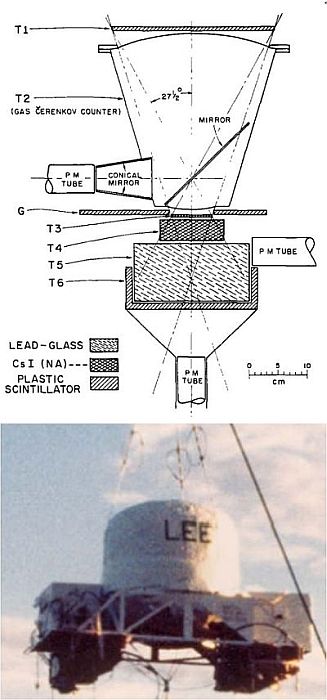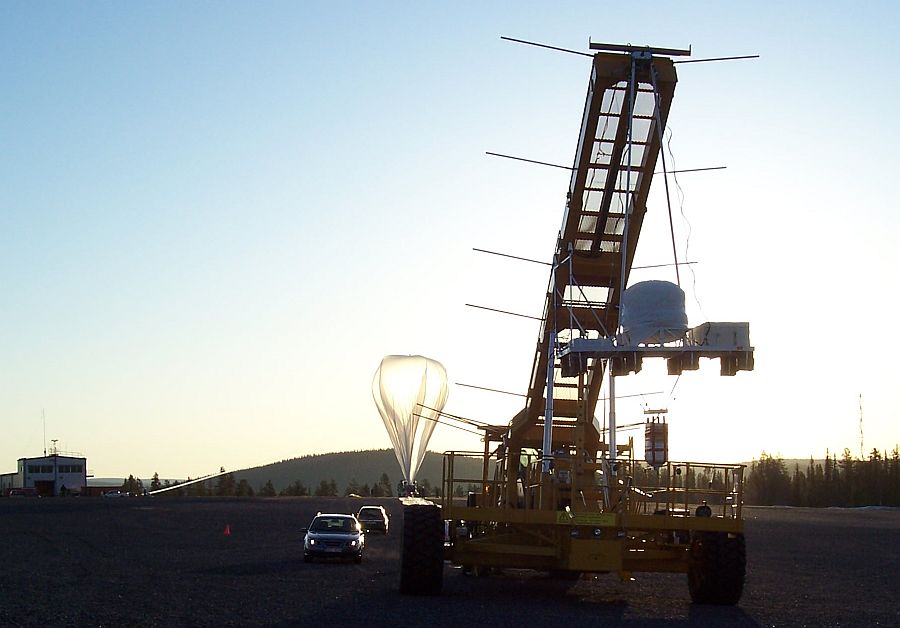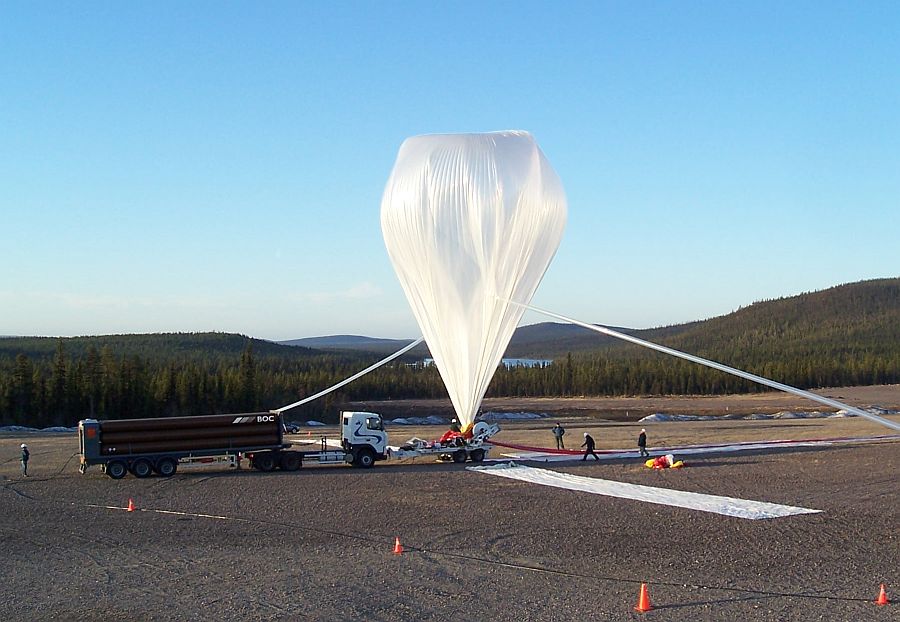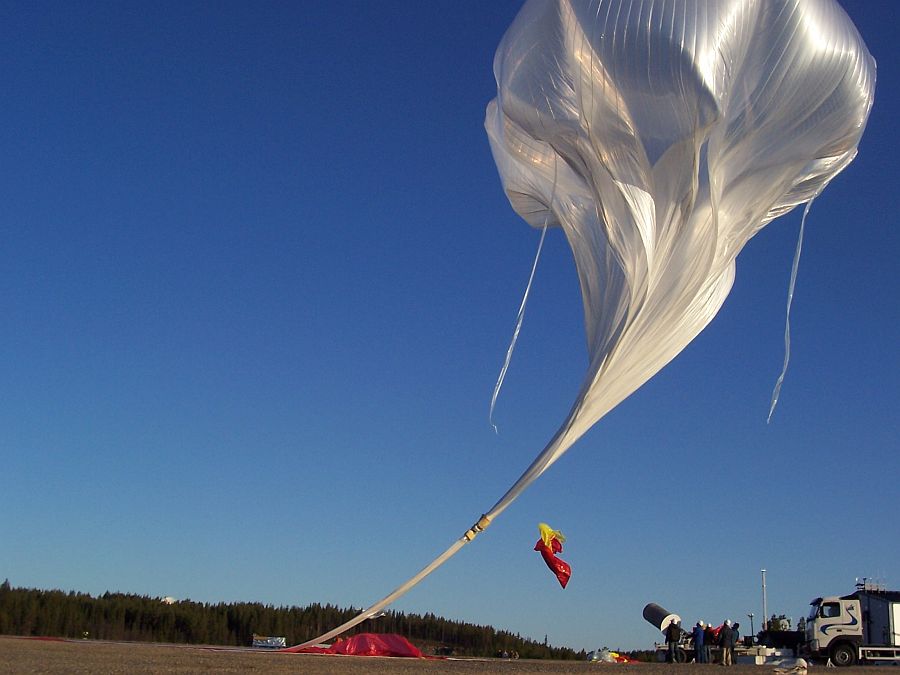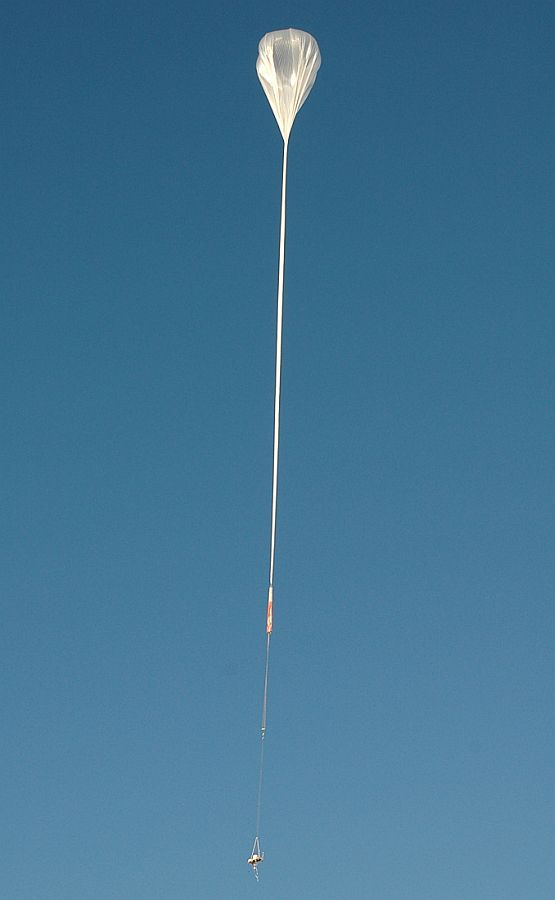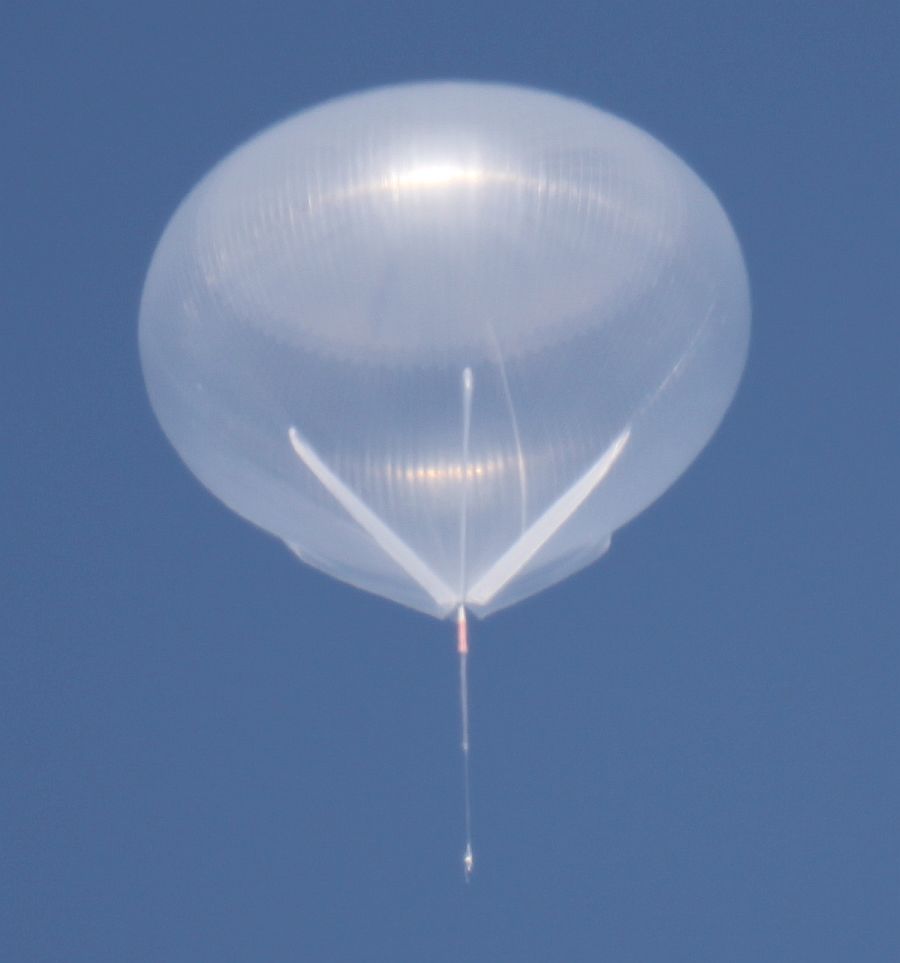Purpose of the flight and payload description
LEE (Low Energy Electron) was an instrument created to measure the energy spectrum of cosmic ray electrons. It was developed in the late 1960's decade at the University of Chicago. Regular balloon flights have been made from Northern Canada every year from 1968 to 1975 and approximately bi-annually until 1979. Then, the experiment was transfered to the University of Delaware, wich now operates it. The observations from LEE provided the scientific community with one of the more precise measurements of the electron spectrum over a period of time of more than 50 years.
In the picture at left we can see a basic scheme of LEE and the instrument ready to flight on its gondola. The design remained intact since its inception with only minor upgrades made periodically. It consisted of a counter telescope made of NE 102 A plastic scintillators, a CsI(T1) scintillator, a gas Cerenkov counter, a lead glass Cerenkov counter, and a plastic penetration counter. Basically, the LEE instrument measured electron energies by causing incoming electrons to shower and recording the resulting signals from the shower counters. The maximum angle of acceptance was 27.5° from vertical, and the geometry factor was 18 cm2 sterad, defined by the two plastic scintillators T1 and T3. These two counters had diameters of 28 cm and 7 cm and thicknesses of 0.5 cm and 0.32 cm respectively. The gas Cerenkov counter T2 consisted of a conical container filled with Freon 12 at 2.5 atmospheres of pressure. The T1, T2, T3 coincidence was used to initiate the measuring process for each event.
Located under this telescope were a CsI counter (T4) of a thickness corresponding to 2 radiation lengths and a lead glass Cerenkov counter (T5), 6.7 radiation lengths thick. Particles entering the telescope were either absorbed or, together with their secondaries, penetrated the plastic cup counter T6. The reason for introducing two separate counters T4 and T5 was that this separation permited distinguishing electrons from interacting protons at high energies, and that counter T4 provided good energy resolution for electrons at low energies.
The output of counter T6 served as an additional parameter for energy determination in those cases where the energy of the initiating electron was sufficiently high that the shower penetrated T5. The output from T6 yielded the number of penetrating shower particles. The addition of a guard counter G, whose firing in coincidence with the master pulse T1 T2 T3 was indicated, served to identify events which were triggered by showers initltated above and around the apparatus. It also rejected events in which secondary particles entered the window of the gas counter photomultiplier leading to a false triggering of T2 by Cerenkov light produced in the window material. For each event, pulse heights were measured from counters T3, T4, T5 and T6 by 256 channel analyzers. The information on rates and pulse heights was digitized by the electronics system and recorded by an on-board magnetic tape recorder as well as telemetered to the ground.
The entire system was housed in an aluminum shell and kept under atmospheric pressure during the balloon flight. The weight of the instrument in its shell and including batteries amounted to approximately 400 lb.
Video footage of the launch
Details of the balloon flight
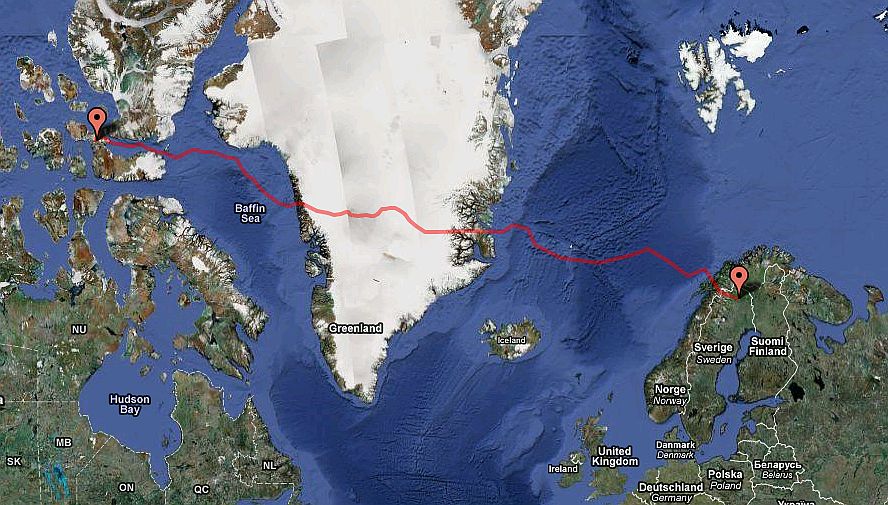
Balloon launched on: 5/17/2009 at 2:26
Launch site: European Space Range, Kiruna, Sweden
Balloon launched by: Columbia Scientific Balloon Facility (CSBF)
Balloon manufacturer/size/composition: Zero Pressure Balloon Winzen 39.570.000 cuft (0.8 Mils) 1 Cap (0.8 mils)
Balloon serial number: Winzen 39.57-2-66
Flight identification number: 593N
End of flight (L for landing time, W for last contact, otherwise termination time): 5/21/2009 at 12:29
Balloon flight duration (F: time at float only, otherwise total flight time in d:days / h:hours or m:minutes - ): ~ 4 d
Landing site: On Devon Island, North of Canada
Payload weight: 600 kgs
The balloon was launched by dynamic method at 2:26 utc on May 17th under near perfect meteorological conditions, and after an initial ascent phase it reached a height of 43.5 km wich according sources from the Swedish Space Corporation was a record with such a heavy payload (about 600 kg of the payload and the entire flight train).
Once at float altitude the balloon started a westward flight path crossing over Sweden and Norway and then entering in the Atlantic Ocean at a stabilized flight height of 41 km.
The mission endured 4 days, 10 hours, and 56 minutes until termination which ocurred at 12:29 utc on May 21. The termination and parachute cutaway were successfully performed using MIP/Iridium procedures, as adverse cloud cover in the termination area prevented use of the chase aircraft. The payload landed in Devon Island in the north of Canada and was recovered days later in its entirety with a single Twin Otter trip to the impact site.
The science group reported excellent data collection throughout the flight. The primary science objective of the flight was to make a definitive determination of the cosmic electron energy spectrum from below 50 to above 5GeV during a Solar Minimum A-magnetic polarity to compare the previous determinations. The results would also provide an important cross-calibration reference for measurements obtained from orbit by the PAMELA instrument launched in June 2006.
External references
- AESOP / LEE web site Bartol Research Institute
- A detector system for cosmic ray electrons Nuclear Instruments and Methods, 85(1), Pag. 93, 1970
- Giant balloon flying high over Atlantic to catch cosmic rays Udaily at Univerity of Delaware website
- List of balloons launched from ESRANGE SSC Space website (via Archive.Org)
3596If you consider this website interesting or useful, you can help me to keep it up and running with a small donation to cover the operational costs. Just the equivalent of the price of a cup of coffee helps a lot.

